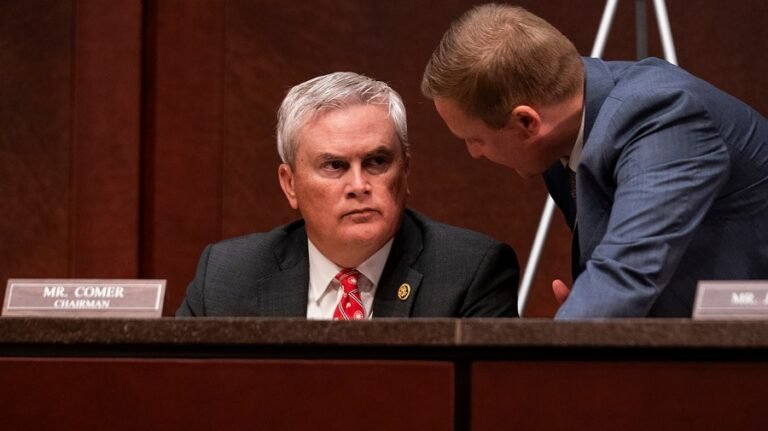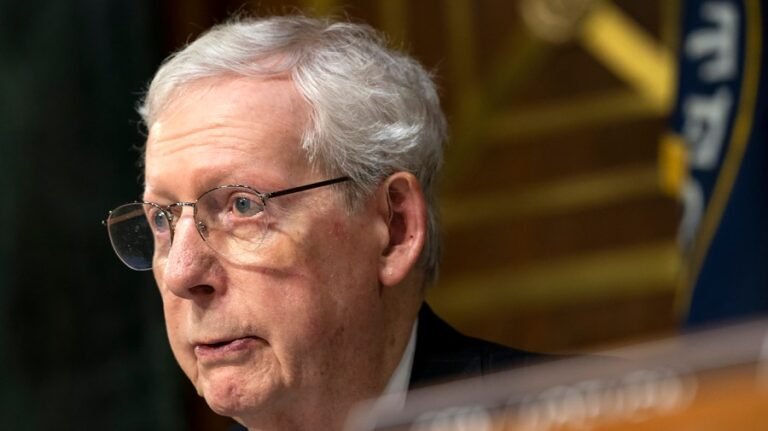
In what may be the first for an independent federal agency, the Consumer Product Safety Commission submitted a budget request to Congress last month proposing its own elimination.
The Trump administration seeks to absorb elements of the commission into the Department of Health and Human Services in order to eliminate the agency’s independence and reduce the transparency of its operations. The budget request also seeks to decrease the number of employees by 75 (to a total of 459) and reduce its budget by $16 million.
If this budget request becomes law, I would likely be the last confirmed chairman of the Consumer Product Safety Commission. It would mark the end of the commission as an independent agency dedicated to protecting the public from unsafe consumer products, and it would reverse 53 years of progress in product safety.
This budget request would never have existed if Trump had not unlawfully removed three sitting commissioners, including myself, last month. U.S. District Court Judge Maddox found the president’s actions unlawful on June 13, enabling us to resume our jobs as commissioners. However, the Trump administration has appealed this ruling and continues to seek our removal.
President Richard Nixon signed the Consumer Product Safety Act into law in 1972, establishing CPSC as a bipartisan, independent agency led by five commissioners who are appointed by the president and confirmed by the Senate. Prior to that, the Department of Commerce and the Food and Drug Administration had responsibility for product safety, but their efforts lacked focus — as a result, Americans suffered. In the lead up to the creation of the CPSC, President Lyndon Johnson recognized that “the homes that we live in can be more dangerous than a booby-trapped mine field” and that change was needed.
The Consumer Product Safety Commission was created to clear this mine field. In establishing the agency, Congress recognized that its independence was important to ensure that it remained unfettered by political dictates and self-interested pressure from industry.
Congress mandated that no more than three commissioners can belong to the same political party; that they are to be appointed to staggered terms, to ensure only a portion of their terms expire at any given time; and that they can only be removed for cause. These legal provisions were designed to prevent swift, drastic changes in the agency’s composition and, ultimately, its regulations and policies. The commission’s current structure promotes stability and continuity, which benefits consumers as well as manufacturers and sellers.
In the months leading up to our removal, my colleagues and I opposed staff reductions to meet arbitrary White House demands. We advanced proposed mandatory product safety standards to save lives — including from horrific fires ignited by faulty lithium-ion batteries. We rejected efforts to dismantle and embed CPSC into the Department of Health and Human Services.
Within weeks of our unlawful terminations, the remaining commissioners withdrew the proposed lithium-ion battery safety rule and embraced the administration’s efforts to abolish the agency’s independence and downsize our staff. The consequences of our absence were plain as the administration moved forward to eliminate the agency and weaken its functions.
The changes proposed by the Trump administration are wholly unnecessary. For over 50 years, the commission has validated the vision of Nixon and Congress for improving product safety. For example, crib fatalities have decreased by nearly 80 percent; pediatric poisonings have decreased by 80 percent; deaths from residential fires have decreased by more than 64 percent. There have been dramatic injury reductions as well. Bicycle injuries have declined by about 35 percent. Baby walker injuries, which resulted in 25,000 emergency room visits in 1992, had dropped by 88 percent by 2020.
Because of the commission’s safety rules, children no longer suffocate in refrigerators, get crushed by closing garage doors or get entrapped underwater in swimming pool drain covers. Safety standards ban lead in toys and ensure that products manufactured for infants and toddlers meet basic safety standards.
The elimination of this agency and the incorporation of its parts into this administration’s troubled HHS would put the agency’s successes and future product safety progress at risk. As was recognized more than 50 years ago, product safety gets lost within a large department with competing priorities.
It would be too easy to put recalls or new product safety standards on the back burner when HHS is faced with a revamp of the Medicare system and with millions losing access to health care. In addition, as resources become harder to find, product safety staff and money may be shifted to politically favored projects within HHS at the whim of the secretary. Without an independent Consumer Product Safety Commission, there will be far less accountability and transparency.
When an agency is independent and commissioners come from multiple perspectives, undue political influence is moderated. The commissioners can work together to build consensus but also act as a check on each other. This ensures that the agency’s actions are transparent to the public and the agency is not taking political direction to favor one company over another.
That is why, once the full commission was reinstated, it submitted a new budget request that affirms the independence of the agency and seeks full funding of its operations. This, however, does not change the administration’s proposal or the HHS budget request to eliminate it and absorb parts of it into HHS.
The president’s request threatens product safety. But, fortunately, eliminating the Consumer Product Safety Commission as it has existed for more than 50 years would require an act of Congress. There are Republican and Democratic members of Congress who recognize the importance of CPSC’s work and its independence. I hope they can convince their colleagues to reject the president’s proposal.
I don’t want to be the last confirmed chairman of the Consumer Product Safety Commission. And none of us want to go back to the days when the homes that we live in were “more dangerous than a booby-trapped mine field.”
Alexander Hoehn-Saric served as chair of the U.S. Consumer Product Safety Commission from October 2021 through January 2025 and is now serving as a commissioner.


